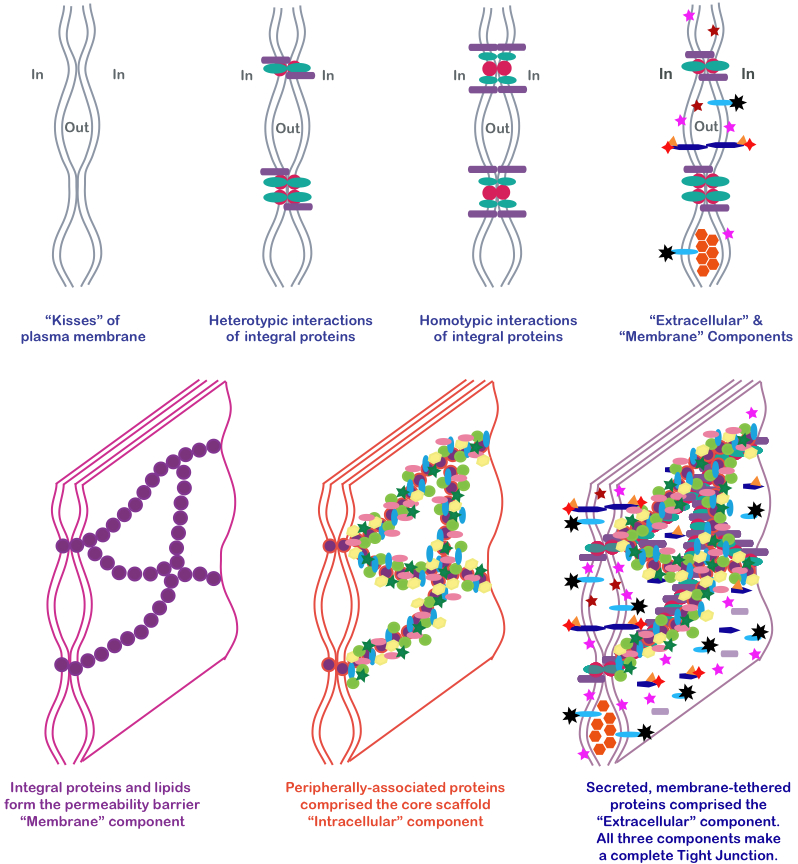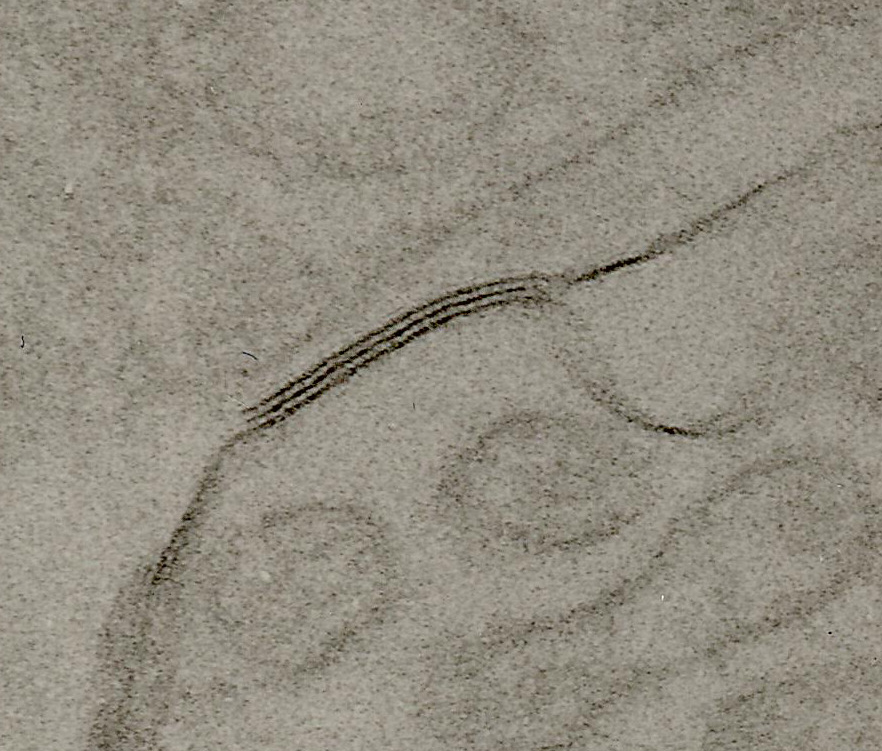Tight junction
Overview
Tight junctions, or zonula occludens, are the closely associated areas of two cells whose membranes join together forming a virtual impermeable barrier to fluid. It is a type of junctional complex only present in vertebrates. The corresponding junctions that occur in invertebrates are septate junctions.
Introduction
Tight junctions (TJs) represent one mode of cell-to-cell adhesion in epithelial cell sheets, forming continuous seals around cells and serving as a physical barrier to prevent solutes and water from passing freely through the paracellular space.[1] TJs create an ion-selective boundary between the apical and basolateral extracellular compartments.[2] These junctions are comprised of sets of continuous networking strands (a linear proteinaceous polymer spanning plasma membranes) in the outwardly facing cytoplasmic leaflet, with complementary grooves in the inwardly facing extracytoplasmic leaflet.[1] Each strand acts independently from the others. The efficiency of the junction in preventing ion passage increases exponentially with the number of strands. The proteins present associate with different peripheral membrane proteins located on the intracellular side of plasma membrane, which anchor the strands to the actin cytoskeleton. TJs join together the cytoskeletons of adjacent cells. TJs are the most apical intercellular junctions and function as selective barriers to macromolecules and prevent diffusion of lipids and proteins between apical and basolateral membrane domains.[3]
Structure
Tight junctions are composed of a branching network of sealing strands, each strand acting independently from the others. Therefore, the efficiency of the junction in preventing ion passage increases exponentially with the number of strands. Each strand is formed from a row of transmembrane proteins embedded in both plasma membranes, with extracellular domains joining one another directly. Although more proteins are present, the major types are the claudins and the occludins. These associate with different peripheral membrane proteins located on the intracellular side of plasma membrane which anchor the strands to the actin cytoskeleton. Thus, tight junctions join together the cytoskeletons of adjacent cells.

Functions
They perform three vital functions:
- They hold cells together
- They block the movement of integral membrane proteins between the apical and basolateral surfaces of the cell, allowing the specialized functions of each surface (for example receptor-mediated endocytosis at the apical surface and exocytosis at the basolateral surface) to be preserved. This aims to preserve the transcellular transport.
- They prevent the passage of molecules and ions through the space between cells. So materials must actually enter the cells (by diffusion or active transport) in order to pass through the tissue. This pathway provides control over what substances are allowed through. (Tight junctions play this role in maintaining the blood-brain barrier.)
Classification
Epithelia are classed as 'tight' or 'leaky' depending on the ability of the tight junctions to prevent water and solute movement:
- Tight epithelia have tight junctions that prevent most movement between cells. An example of a tight epithelium is the distal convoluted tubule, part of the nephron in the kidney.
- Leaky epithelia do not have these tight junctions.
References
- ↑ Jump up to: 1.0 1.1 "Entrez Gene: CLDN16 claudin 16".
- ↑ Hou J, Paul DL, Goodenough DA (2005). "Paracellin-1 and the modulation of ion selectivity of tight junctions". J Cell Sci. 118(Pt 21): 5109–18. doi:10.1242/jcs.02631. PMID 16234325. Unknown parameter
|month=ignored (help) - ↑ Tokés AM, Kulka J, Paku S, Szik A, Páska C, Novák PK, Szilák L, Kiss A, Bögi K, Schaff Z (2005). "Claudin-1, -3 and -4 proteins and mRNA expression in benign and malignant breast lesions: a research study". Breast Cancer Res. 7 (2): R296–305. doi:10.1186/bcr983. PMID 15743508.
See also

External links
- An Overview of the Tight Junction at Zonapse.Net
- New!! Occludin in Focus at Zonapse.Net
- Some good pictures of tight junctions at nastech.com
- Tight+Junctions at the US National Library of Medicine Medical Subject Headings (MeSH)
- Histology image: 20502loa – Histology Learning System at Boston University
de:Tight Junction nl:Tight junction fi:Tiivis liitos sv:Tight junction Template:WH Template:WikiDoc Sources